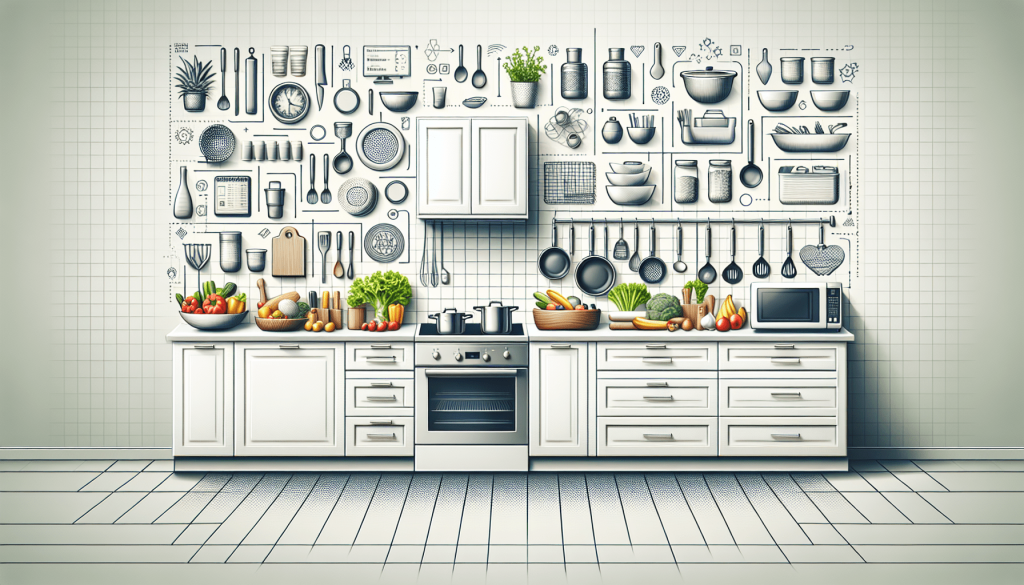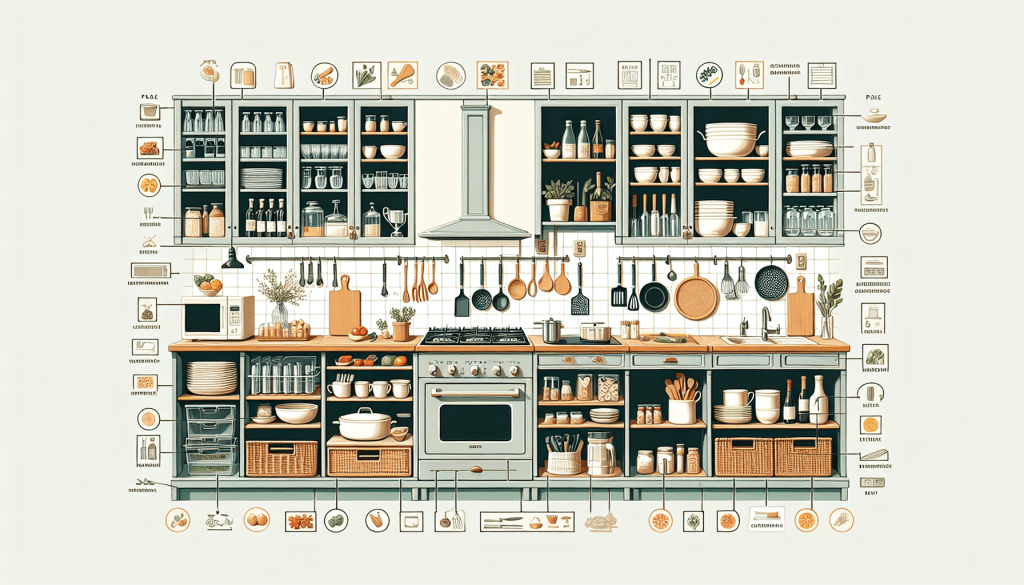Setting up a functional kitchen workflow is essential for optimal efficiency and productivity in your culinary space. By establishing a well-organized system, you can streamline your cooking process, minimize unnecessary steps, and ensure everything flows smoothly. In this article, we will explore some practical tips and strategies that will help you create a functional kitchen workflow that maximizes your efficiency and allows you to enjoy your time in the kitchen to the fullest. From organizing your ingredients and tools to implementing time-saving techniques, we’ve got you covered. So, let’s get started on transforming your kitchen into a well-oiled machine!

1. Assess Your Kitchen Space
When setting up a functional kitchen workflow, the first step is to assess your kitchen space. This involves measuring the space accurately to have a clear understanding of the area you are working with. By knowing the dimensions, you can plan your kitchen layout more effectively.
Next, take a careful look at the current layout of your kitchen. Consider how the existing design may impact your workflow. Are there any specific problem areas that hinder smooth movement and accessibility? Identifying these areas will help you come up with solutions to improve your kitchen’s functionality.
2. Plan Your Kitchen Zones
To optimize your kitchen workflow, it’s essential to separate different areas for specific tasks. Start by designating separate cooking and cleaning areas. This way, you can easily transition between preparing meals and cleaning up without any disruptions.
Consider creating storage zones in your kitchen to keep your utensils and ingredients organized. This will help you locate items easily when you need them. Additionally, having a dedicated preparation zone will streamline your cooking process, as you’ll have all the necessary tools and ingredients within reach.
3. Organize Your Utensils and Tools
Gather all your utensils and tools and start by sorting and decluttering them. Get rid of items that are old, damaged, or no longer in use. Once you have narrowed down your selection, group similar items together to make them easier to find. For example, keep all your baking tools in one drawer or container and your cooking utensils in another.
Arrange your utensils and tools in a way that is within easy reach. Consider installing hooks or racks on the wall or inside cabinets to hang frequently used items. This not only saves space but also ensures that everything is easily accessible when you need it during your cooking process.
4. Streamline Your Cooking Process
Efficiently organizing your ingredients and spices can significantly streamline your cooking process. Sort and group them together based on their categories, such as herbs, spices, oils, and dry goods. This way, you’ll be able to locate everything quickly while cooking.
Prepare a mise en place, which means organizing and prepping all the necessary ingredients and tools before you start cooking. This ensures that you have everything you need within reach and minimizes the chances of forgetting an important ingredient or step during your cooking process.
Consider investing in time-saving appliances such as food processors, slow cookers, or instant pots. These appliances can help you save time and effort by automating certain tasks and reducing the need for manual preparation.

5. Optimize Your Storage Solutions
Maximize your storage space by utilizing vertical areas, such as the walls or the backs of cabinet doors. Install shelves or racks to store items that are not frequently used but still need to be easily accessible. This frees up your counter and cabinet space for items that you use more frequently.
Label containers and jars to maintain an organized storage system. This makes it easier to identify ingredients and prevents any confusion or mix-ups when cooking. Clear labels also help keep your pantry neat and tidy.
6. Set Up an Efficient Cleaning System
In addition to setting up your cooking areas, it’s important to have an efficient cleaning system in place. Designate a specific area for dishwashing, whether it’s a separate sink or a section of your kitchen counter. Having a dedicated dishwashing area allows you to keep your workspace clean and organized while efficiently cleaning up after meals.
Organize your cleaning supplies in a convenient and accessible location. Keep them together, such as under the sink or in a designated cleaning cabinet. This way, you can easily grab what you need when it’s time for cleaning.
Establish a cleaning schedule to ensure that your kitchen remains clean and hygienic at all times. This can include daily tasks, such as wiping down countertops and sweeping the floor, as well as weekly or monthly tasks, such as deep cleaning appliances or decluttering storage areas.
7. Enhance Safety and Accessibility
When setting up your kitchen for efficient workflow, it’s important to prioritize safety and accessibility. Install proper lighting throughout your kitchen to ensure good visibility, especially in work areas such as the cooking and cleaning zones. Adequate lighting not only improves safety but also makes tasks easier and more enjoyable.
Use non-slip mats near the sink and stove to prevent accidents from spills or slippery surfaces. These mats provide a secure footing, reducing the risk of slips and falls.
Consider ergonomic design when arranging your kitchen layout. This means placing commonly used items at a comfortable height and ensuring that your workspace is easily accessible. Keeping frequently used items within reach prevents unnecessary bending or stretching, which can strain your body over time.
8. Create a Workflow Chart
Visualize your kitchen workflow by creating a workflow chart. This chart helps you understand the logical sequence of tasks and identify any bottlenecks or areas for improvement.
Start by mapping out the flow of activities, from preparing ingredients to cooking and cleaning up. Identify any obstacles or inefficiencies in your current workflow and brainstorm ways to address them. Adjust your workflow chart as needed to create a more streamlined and efficient process.
9. Maintain Regular Cleaning and Organization
To ensure continued functionality in your kitchen, adopting regular cleaning routines is essential. Incorporate daily cleaning tasks into your routine, such as wiping down surfaces, doing dishes, and taking out the trash. This helps maintain a clean and organized workspace every day.
Regularly reassess and declutter your kitchen to prevent it from becoming cluttered and overwhelming. Take the time to go through your utensils, tools, and ingredients, discarding any items that are no longer needed. This keeps your kitchen organized and prevents unnecessary items from taking up valuable space.
Additionally, keep up with maintenance tasks, such as checking and replacing any faulty appliances or utensils. This ensures that everything in your kitchen is in good working condition and helps prevent any disruptions to your workflow.
10. Continuously Improve and Adapt
To truly optimize your kitchen workflow, it’s important to continuously seek feedback from family members or anyone else who uses the kitchen. Ask for their input on the current setup and any areas they find challenging or inefficient. This feedback provides valuable insights for making improvements and adjustments.
Experiment with new tools or techniques to find what works best for you. Try out different gadgets, utensils, or cooking methods to see if they enhance your workflow. Be open to adapting your workflow over time as your needs and preferences change.
By following these steps and implementing an efficient workflow in your kitchen, you can create a functional and enjoyable space that makes cooking and meal preparation a breeze.
